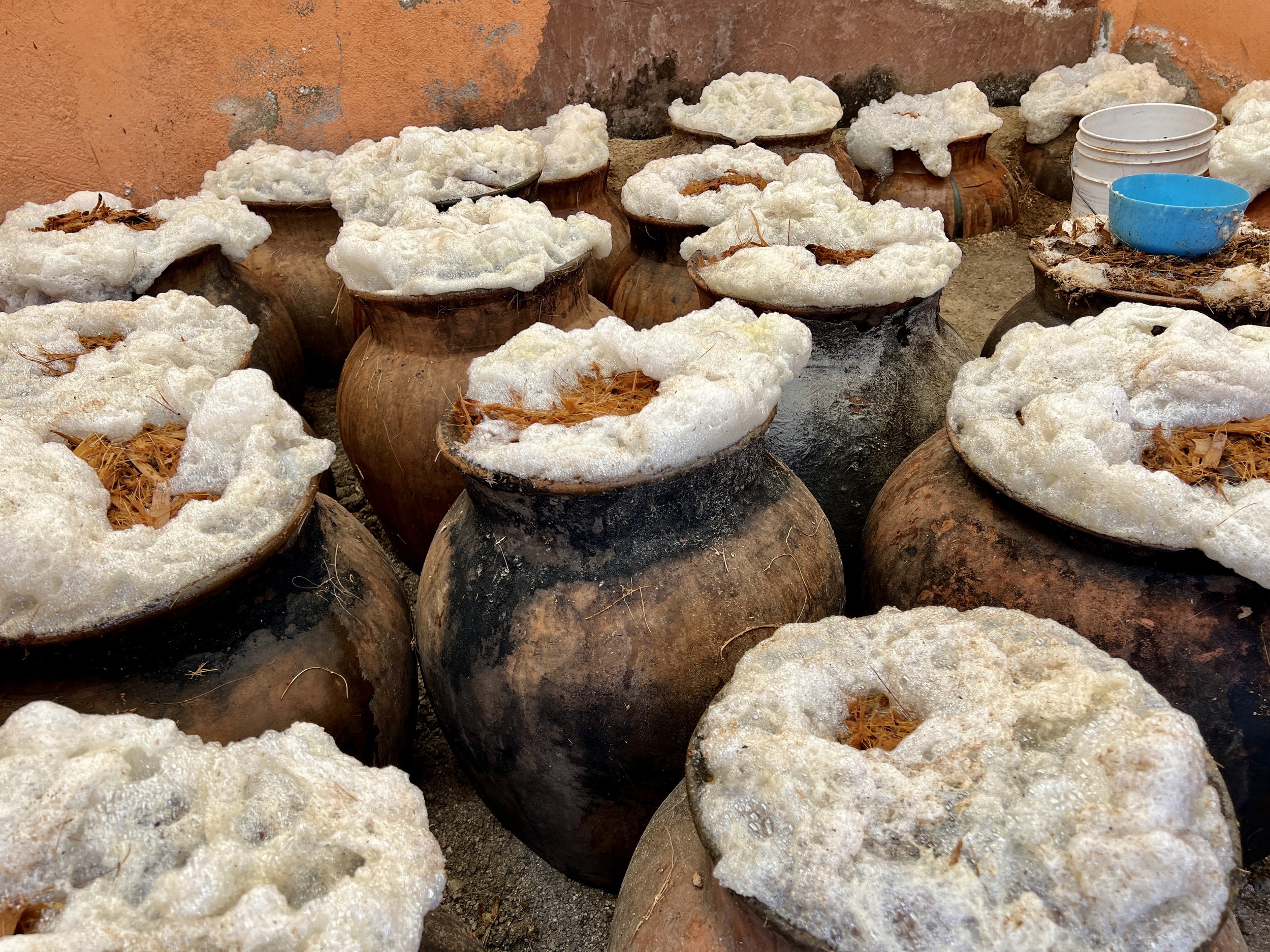Creador Release 3 - Agave Source and Terroir
Creador Release 3 introduces five new expressions by maestro palenquero José Alberto Pablo in San Bernardo Mixtepec, Oaxaca. There are also new batches of Lumbre, Mexicano, Espadín Capón, and two very special 50-liter batches of Jabalí, all of which exemplify the theme of this release - agave source and terroir.
Foam over flowing from the clay pots during Mexicano Capón fermentation
In addition to growing his own agave, in recent years José Alberto has been building a network of magueyeros - agave farmers - from which he can source agave. Already working with magueyeros that source from Zimatlán de Alvarez and Sola de Vega, he has recently broadened his network to work with magueyeros that source from San Baltazar Chichicapam and Santa Maria Zoquitlan. This access to agave from a variety of regions in Oaxaca is not common and is a fairly new development spurred on by the growing agave spirit market and the industry and endeavors of agave farmers and palenqueros alike.
The constant in José Alberto’s agave spirits are his hand and his process. The variables are the plants, region, soil, climate, and environmental growing conditions - the terroir. Through these constants and variables we truly get to experience agave spirits highlighting regionality in a unique way.
The two 50-liter batches of Jabali exemplify this equation. One batch uses agave sourced from Sola de Vega (from where previous batches of José Alberto’s jabalí are sourced), 53km southwest from San Bernardo Mixtepec. The other uses agave sourced from San Baltazar Chichicapam, 57km due east. The differences in these two batches couldn’t be more marked, from nose and palette, to texture and even color of the distillate. Same producer, same process, same agave, but different region, soil, climate, and growing conditions. (If you see these bottles in the wild, they are differentiated by batch number. JAJA0524-1 is from Sola, JAJA0524-2 from Chichicapam.)
San Bernardo Mixtepec (José Alberto’s home) - Lumbre, Espadín (used in the Ensamble con Cacao)
Santa Ana Tlapacoyan - Tobalá
Zimatlán de Alvarez - Mexicano, Mexicano Capón, Espadín Capón
San Baltazar Chichicapam - Tepextate, Jabalí
Sola de Vega - Coyote, Jabalí
Semi-wild, semi-cultivated agave potatorum (tobalá), Santa Ana Tlapacoyan
The 50-liter batch of Tepextate + Mexicano Ensamble is another example, highlighting two different agaves from two different regions of Oaxaca. The tepextate (agave marmorata) was sourced from San Baltazar Chichicapam, 57km east of San Bernardo Mixtepec, while the mexicano (agave rhodacantha) was sourced from nearby Zimatlán de Alvarez, 27km northeast. Pairing these two agaves is rare in itself. Adding the variable of terroir is new, special, and specific to the creativity and resourcefulness of José Alberto. (This batch can be found exclusively at Travis Heights Wine & Spirits, and Mezcalería Tobalá in Austin, TX.)
Traditionally palenqueros use locally sourced agave for their distillates. For example, José Alberto’s father and grandfather made destilado from the agave at hand, sourced locally and not far afield from San Bernardo Mixtepec. As the agave landscape evolves and changes, along with the emergence of young, resourceful, and creative producers, we are seeing new variations in traditional agave spirits, and we are among the first to ever try these special creations.
José Alberto’s pursuit of making the best destilados possible has him sourcing agave not only from home, but from a variety of regions in Oaxaca. The long maturation times of the agave he grows in part pushes this, but other drivers include his curiosity and creativity, as well as the explosion of the agave market, which has encouraged farmers to grow agave, not only for the large industrial mezcal companies, but also for traditional small-batch makers such as José Alberto. Jose Alberto is unmoving in his desire to make and share with you the highest quality destilados he possibly can. Salud!
New for the third release:
Coyote (agave americana) - 400 liters, a full batch, and José Alberto’s first
Mexicano Capón (agave rhodacantha) - 200 liters, and also José Alberto’s first batch of mexicano capón, pictured above. The high sugar content caused the pots to overflow, much like a mug of root beer. Unlike the foam seen while fermenting jabalí, which contains toxins named saponins, the foam from the mexicano is not toxic.
Ensamble con Cacao (agave angustifolias, with cacao) - 200 liters, and José Alberto’s first agave spirit distilled with cacao, or anything else. An ensamble of lumbre and espadin, with cacao beans, roasted, milled, and then added to the pots and distillate during the second distillation.
Tobalá (agave potatorum) - Only 100 liters of this batch made it to the US, as it was José Alberto’s first batch of tobalá in 5 years, and is quite popular with the locals.
Tepextate + Mexicano Ensamble (agave marmorata & rhodacantha) - 50 liters, and José Alberto’s first time working tepextate.



